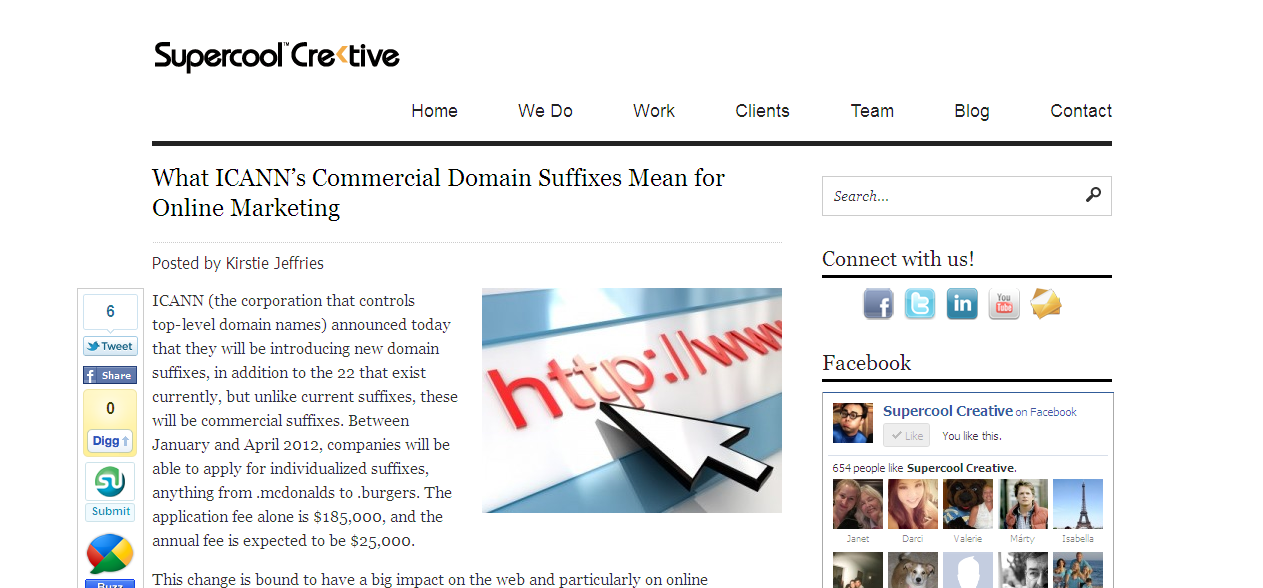When Facebook introduced a major algorithm update in 2018 that would de-prioritize brand pages, it had marketers in a panic. In my post for Annex Cloud’s blog, I discussed how referral marketing tools (like Annex Cloud’s!) could help combat the shakeup. Read the original post here or continue below.
In the wake of yet another update to Facebook’s News Feed algorithm, marketers need to shift their focus from brand broadcasting to referral programs and word-of-mouth, earned social media.
Facebook’s Mark Zuckerberg recently sent the marketing world into a flurry when he announced a News Feed algorithm update that prioritizes personal profiles and groups over brand pages. Marketers’ subsequent scramble to adjust strategies accordingly is something that seasoned veterans have seen time and time again. Facebook – and social media in general – has become increasingly “pay to play,” making it more and more difficult for brands to see significant reach and influence through organic, widely broadcast content. Tried and true techniques that once saw a high conversion rate may be entirely useless now, requiring marketers to overhaul their strategies and budgets each time Facebook introduces an algorithm update.
This leaves marketers with two options:
- Remain at the beck and call of platforms like Facebook but be prepared to pivot at a moment’s notice, or
- Recognize that earned media – such as referral programs – must play an increasingly important role going forward.

According to Zuckerberg, “[Y]ou can expect to see more from your friends, family and groups. As we roll this out, you’ll see less public content like posts from businesses, brands, and media.” This may be troublesome for some marketers, but, by introducing and optimizing referral programs, brands can begin to depend less on their page’s reach and engagement. Instead, they can focus on encouraging word-of-mouth interactions that are impervious to platform turbulence.
Although Facebook’s latest algorithm update sheds new light on just how important referral marketing is in the age of owned media, its effectiveness has proven itself time and time again. 92% of people say that they trust recommendations from friends and family more than any other type of marketing, and referral marketing generates three to five times the conversion rates of any other channel.
When Annex Cloud worked with footwear retailer Vivobarefoot to introduce referral programs, the brand saw a 38% growth in sales. Referred customers converted at 32.1%, almost tenfold the site average conversion rate. Moreover, referral programs boost sales on both sides of the equation: customers who make the referrals convert at 31.9%.

These numbers combined with the growing risks of relying on owned media make it clear that now is a more important time than ever to focus on referral marketing. What if Facebook introduced even harsher restrictions on page reach? Or if Twitter disappeared entirely tomorrow? Can you rely on search traffic knowing that a new Google update could send your rankings plummeting? Referral marketing is not only statistically effective, but it also has a unique capability to weather the storm of platform changes, no matter how drastic.
Of course, simply introducing a referral program isn’t enough; it needs to be customized for your buyers and be optimized for resilience to external changes. When creating a referral program, keep these tips in mind.
1. Remain independent
While referral programs built directly into social media platforms are popular, the success of posts shared through these apps is at the mercy of the platform itself. Rather than requiring customers to provide account permissions to share a referral link (which itself can be a barrier to entry), simplify the process – and keep it flexible – by providing users with a custom URL they can share anywhere they’d like.

2. But don’t disregard social media either
Keep your referral program adaptable, but remember that social media sharing still has huge potential. Not only is the majority of your target audience active somewhere on social media, but social networks are also a great way to spread your brand to exactly the type of people who are most likely to purchase. The concept of homophily states that individuals tend to associate with others who are similar to them. When a customer shares a referral link to their entire friends/followers list or to a group, there’s a high chance they’re reaching people who would be just as interested in your product or service as they were.
Investigate which platforms are most popular with your target demographic, and provide your customers with buttons that make it easy to share their referral link across social media. Organic brand posts may be dying a slow death, but personal sharing is alive and well and can bring major success to your brand.

3. Motivate peer-to-peer sharing
Referral programs are as effective as they are largely because they target your precise audience. Who better to determine if someone would be interested in your product or service than a close friend or family member? While allowing your referral program members to share across their entire network can result in a larger number of impressions, conversion rates skyrocket when referrals are shared one-on-one. Additionally, while published posts’ reach – even those shared on personal profiles – may be affected by social media algorithms, private messages will reach exactly who your customer wants them to reach. Facilitate peer-to-peer referrals via email, Facebook Messenger, Whatsapp, and other private messaging systems that are popular among your audience.
4. Optimize shared posts
Algorithms may change, but one thing remains consistent in online marketing: great copy and design will grab users’ attention and drive conversions. Attach eye-catching thumbnails and meta descriptions to your referral links that stand out on customers’ feeds, make clear what you’re selling, and include calls to action that inspire them to click and purchase.
5. Gather user data
Your brand may have millions of social media followers, but that user data is owned by the individual social networks, not you. If a platform were to shut your account down tomorrow, would you have a way to continue communicating with your followers? Your referral program should gather data on your prospects and customers that you can use in omnichannel marketing like retargeting ads and emails or to gain better insight into their desires and purchase history. Collect important data through this referral program: start small, with email address and purchase history, but build up your customer intel over time through surveys and tracking.

6. Hook customers with email marketing
Email service providers may come and go, and best practices may change from year to year, but email has been around for decades and isn’t going anywhere. More importantly, you – not another business like Facebook or Twitter – control what you send to your customers via email. Finding subject lines that get opened and calls to action that get clicked isn’t an easy process, but at least it falls entirely in your domain. Set up email marketing lifecycles that remind customers of their referral rewards, hit them at the best stages of the buying journey, and encourage them to be long-term, repeat consumers.
7. Utilize data and A/B testing to continuously improve
Regular tests and improvements are important in any marketing effort, but the changing landscape of social media makes analytics particularly essential to referral marketing. You’ll find speculation after speculation about how social media updates affect strategy and how to make the most of new features and algorithm changes, but speculation is just speculation. Social networks keep their algorithms top secret precisely so marketers can’t find a way to game the system.
Don’t let this shroud of mystery deter you, however. Your own analytics and insights can go a long way. If you suddenly see a significant drop in Facebook conversions, drill deeper into your data and figure out which factors could be responsible. Never get complacent: a good referral program requires continuous adjustments to maintain and improve ROI.

Facebook’s latest algorithm update is just one event in a long series of platform changes that have required marketers to reexamine their entire digital approach. Naturally, platforms like Facebook can’t be overlooked, but brands need to minimize their vulnerability to tumultuous external forces and center their strategies around versatility and resilience. Referral marketing’s high ROI and platform independence makes it more important now than ever before.










